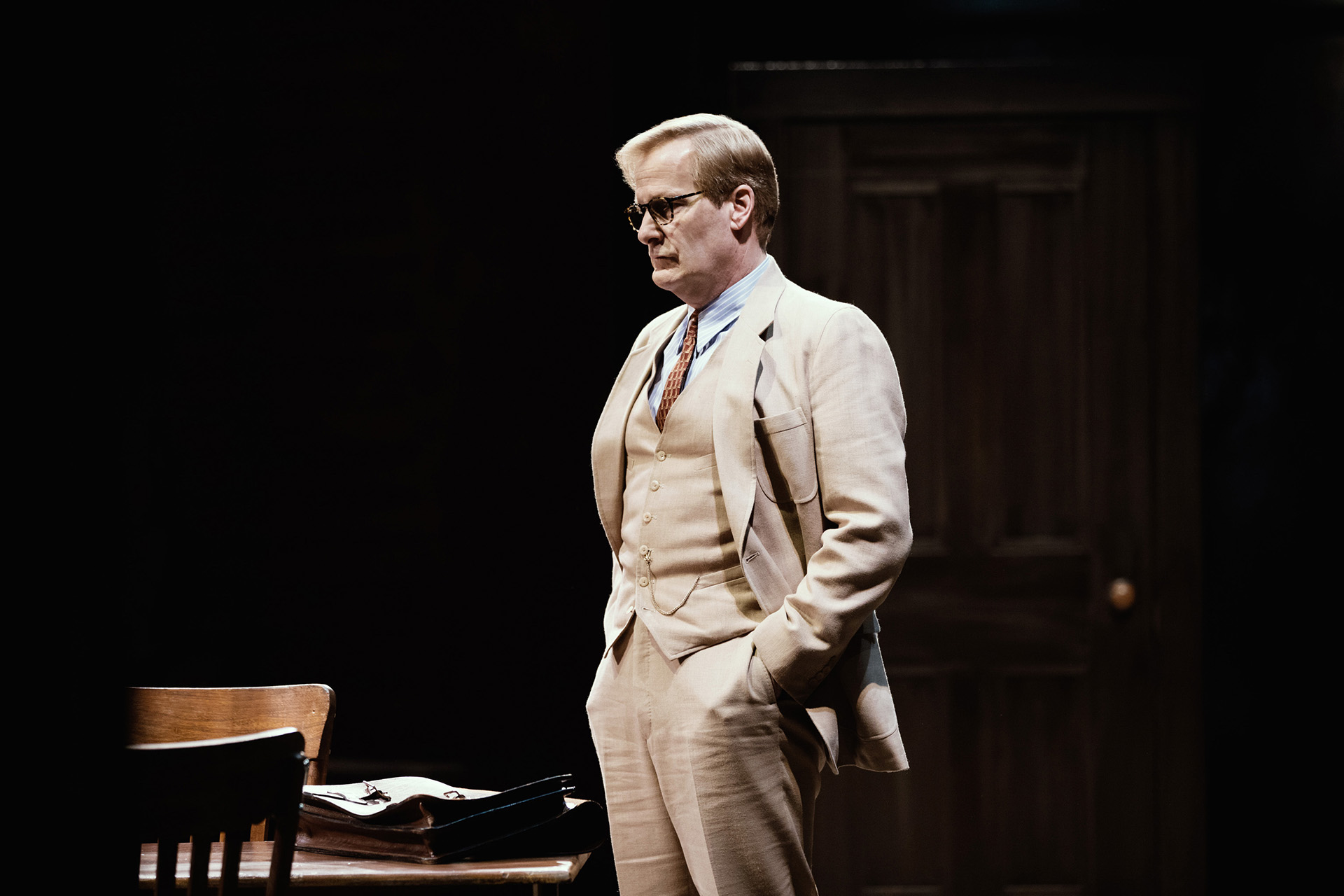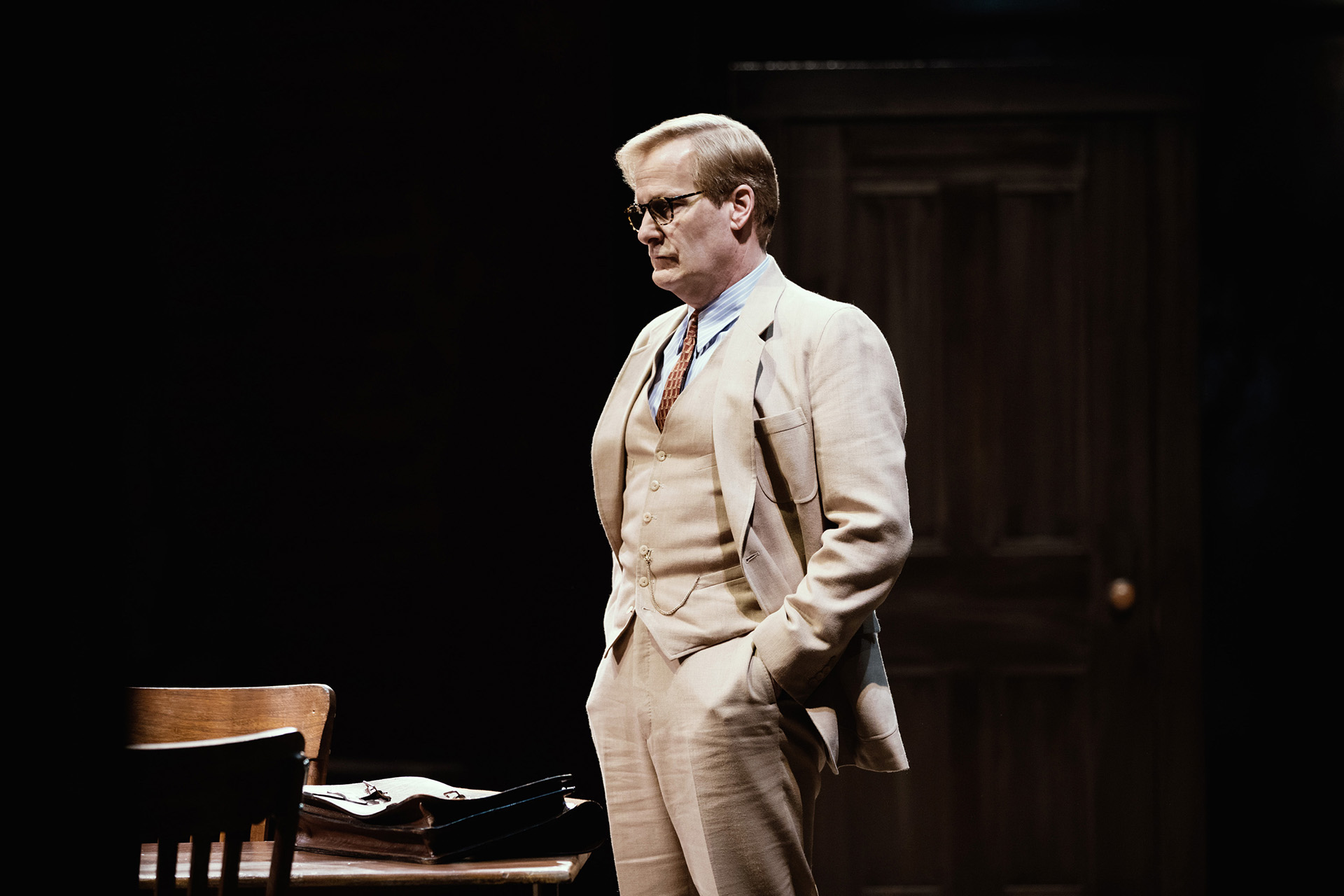‘To Kill A Mockingbird’ Has Powerful Ensemble


Black Lives Matter carries its torch in this year’s Oscar nominations with nods to “BlacKkKlansman,” “If Beale Street Could Talk,” and “Green Book,” among them. On the stage, “American Son” and “To Kill A Mockingbird” also bring to light the senseless and wrongful incarceration of African-American men.
“To Kill A Mockingbird,” Harper Lee’s novel, along with Horton Foote’s film adaptation, have engrained this tale, about an innocent black man who was murdered trying to escape an unjust penal system, into the American psyche. It’s as fundamental to our cultural awareness as classical Greek theater was to its audience. Its Broadway premiere, adapted to the stage by Aaron Sorkin, remains true to the novel, although with some significant changes.
Fueled by a powerful ensemble of actors, it’s a mesmerizing production. As Atticus (also the nickname of a philosopher friend to Cicero in ancient times) Finch, Jeff Daniels maintains a consistent, albeit ambivalent presence. In his soft-spoken way, he turns from an idealistic lawyer into a man deeply disillusioned with the law and its ineffectual treatment of white supremacy, as well as its inability to control racial violence.
As his foe, the Klansman Bob Ewell, Frederick Weller holds us in a state of constant tension, portraying the irascible, slimy man driven to destroy Robinson (Gbenga Akinnagbe), and if he needs to, Atticus and his children.
Here, Scout (Celia Keenan-Bolger) is Atticus’s daughter, and to a lesser extent than in the novel, the narrator. She observes wrongdoing from a child’s perspective, and while the events shatter her innocence, she remains challenging, provoking the audience to question fundamental concepts, such as good and evil, and justice versus revenge. But her role in this production is overshadowed by Atticus, who is forced to confront his fundamental belief that there is good in all people. By the end, he seems disparaged — a man falling under the weight of his own belief system.
That Ewell’s attempt to revenge himself on Atticus by killing his children is thwarted, is the work of a character whom we only see at the play’s conclusion. But, Boo Radley (Danny Wolohan) is spoken about throughout the play as a strange man, like a monster. That he saves Scout, and her brother Jem’s (Will Pullen’s) lives, tells us something about how we misjudge people.
Not to be forgotten, Latanya Richardson Jackson as Calpurnia, the wise and intuitive maid to Atticus’s family, shines with a depth of understanding that greatly exceeds her position in a 1930s small town Southern society. She even challenges Atticus, finding him weak in resisting the racial violence that now attacks him. Clearly, this is a more contemporary way of depicting a character who, as originally drawn, would appear as a stereotype today.
Miriam Buether’s rustic staging morphs from interiors to exterior scenes with a large limb for lynching peering into the courtroom. And Adam Guettel’s music expresses endless melancholy.
Director Bartlett Sher builds a story rife with ambiguity. For whatever justice is achieved, Robinson’s death cannot be forgotten. It leaves the audience with a troubling feeling.
Nassim
In “Nassim,” the actor faces the challenge of performing a play they have not read, and which is written primarily in Farsi. There are no rehearsals, and the staging is minimal. For the actor, this must be like landing on a dangerously deserted island, as in the reality TV series “Survivor.”
Produced by Barrow Street Theatricals and performed at City Center, the production hosts a different actor at each performance. Among those appearing in upcoming performances are Richard Kind and Reed Birney.
Watching Amanda Quaid, at the show I attended, was fascinating because she is also an accomplished dialect coach. Surprisingly, she picked up Farsi with awesome finesse.
It is written by Nassim Soleimanpour, the young Iranian playwright who recently came to the attention of American audiences with his production, “White Rabbit Red Rabbit.” Performed first in New York by Nathan Lane, the cast of celebrities that followed included Whoopi Goldberg and Cynthia Nixon.
When it opened in London, Soleimanpour, a conscientious objector who refused Iran’s mandatory military service, was not allowed to leave his country. Here, in “Nassim,” he appears on stage, well into the production’s 80 minutes. By now, we’ve had the opportunity to spend time with Quaid, who, casually attired, brings an instinctively lively and inquisitive presence to this metatheatrical event.
We are here to enjoy the gift of storytelling, in a unique way.
Communicating in Farsi evokes Soleimanpour’s Proustian memories of his Iranian boyhood. He recounts feeling like an outsider in his own country, even then. Beginning with fairy tales, which Quaid reads from a large on-stage screen, we learn about the playwright, about life in Iran, and the national language of Farsi. Most important, we observe how language creates synergy between people, fostering friendship, building community, and as Levi-Strauss maintains, defining culture.
A few willing members of the audience join them on stage, and are given the task of speaking in Farsi. That they fail only enhances the audience’s empathy with the theatrical experience, and highlights the obstacles we trip on in our cross-cultural communications.
In Quaid’s deft hands, the production is playful, humorous, sad, and always, of the moment. The text is projected on a large on-stage screen, in the style of a graphic novel. “Nassim” is not an essay, nor is it didactic.
Language is love. Soleimanpour calls his mother from the stage, speaking their mother tongue. Inventive and elusive, the production takes us on an odyssey, much like the playwright must have experienced in discovering Western culture.



